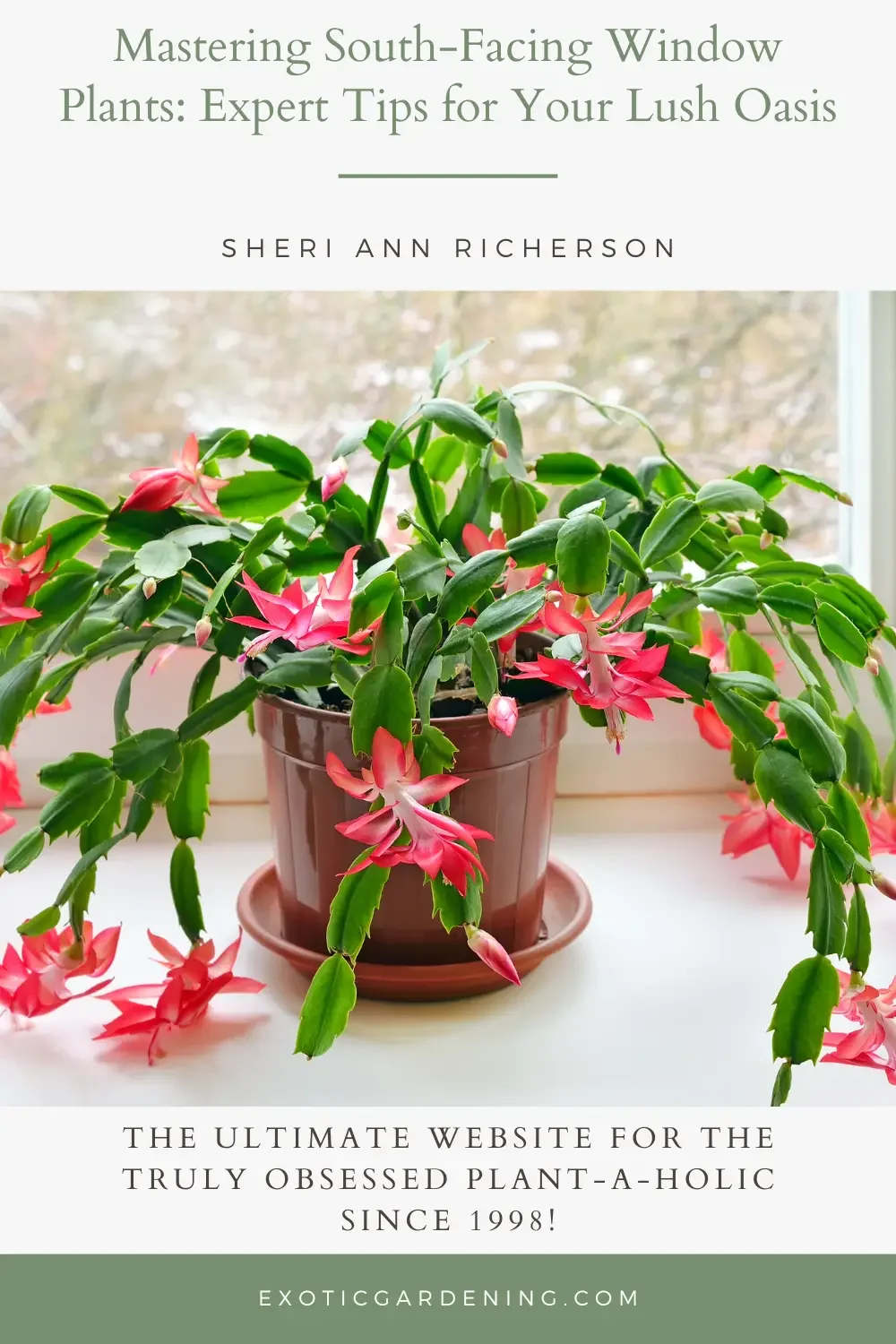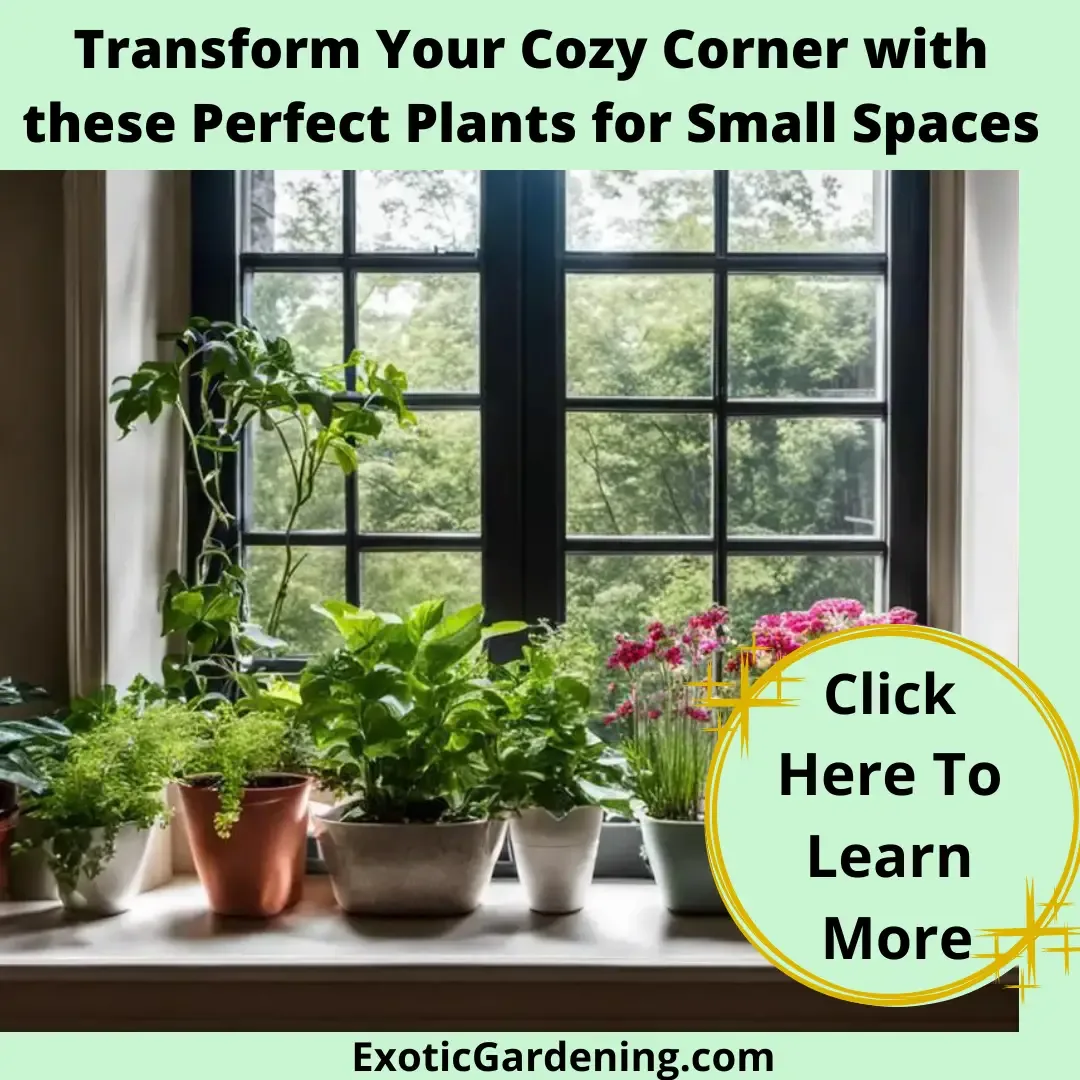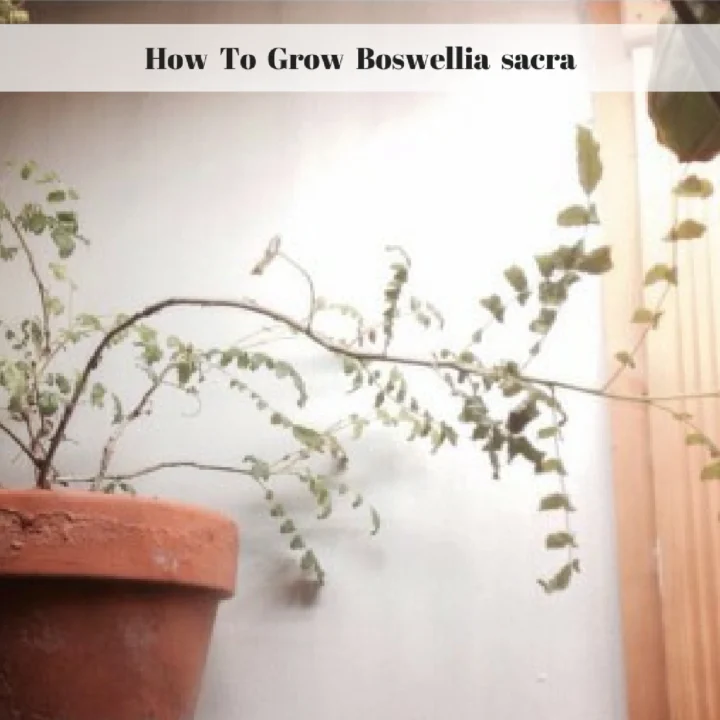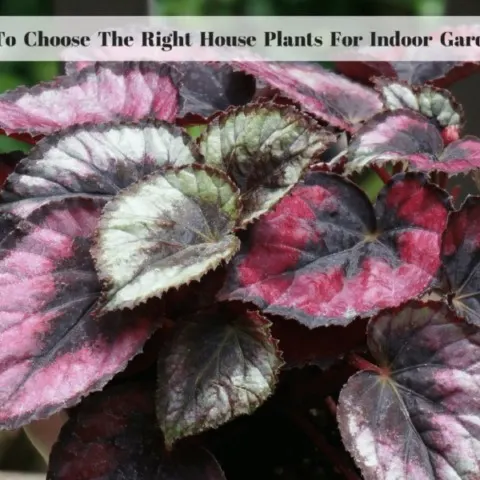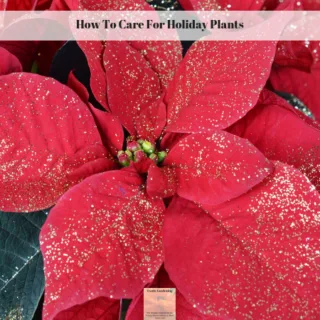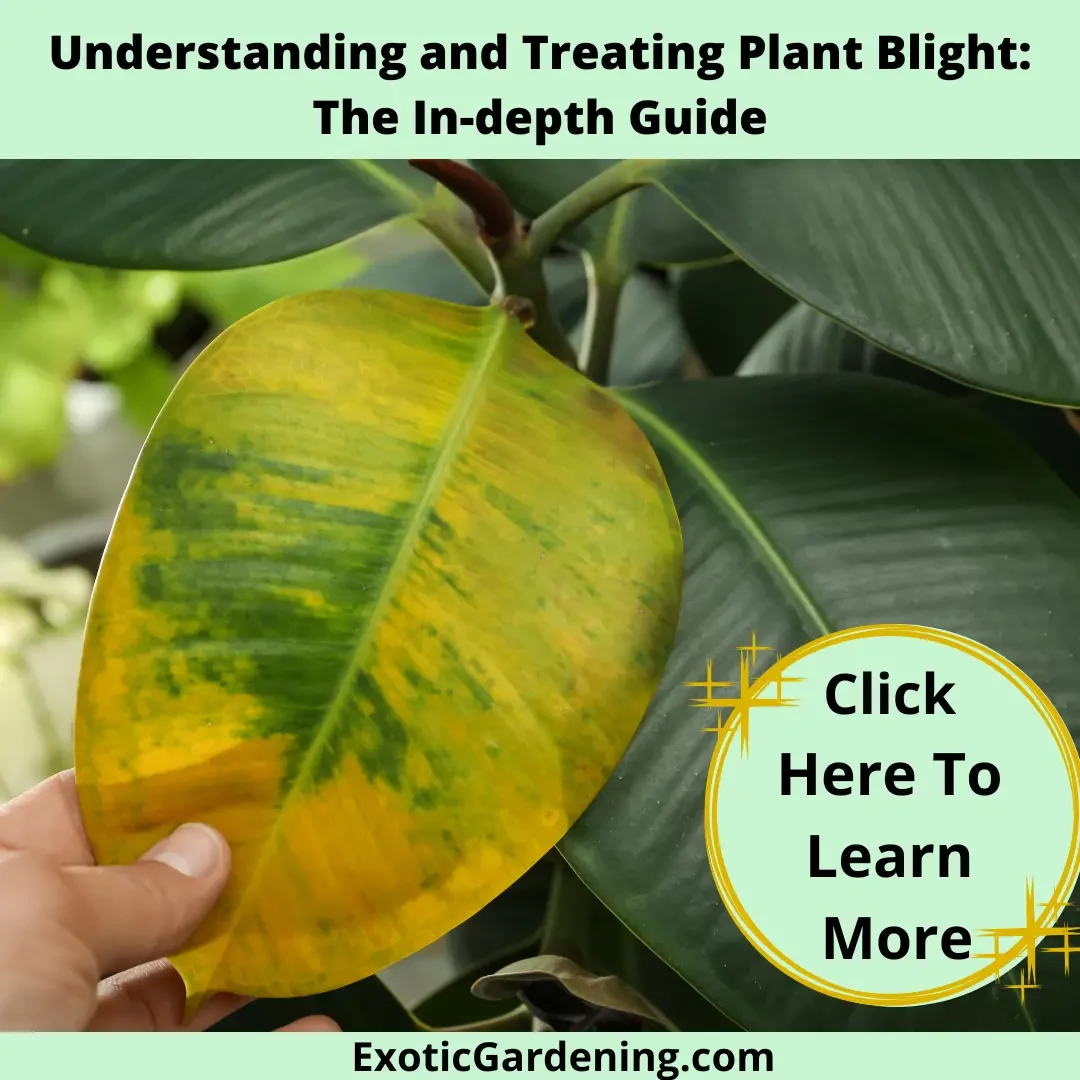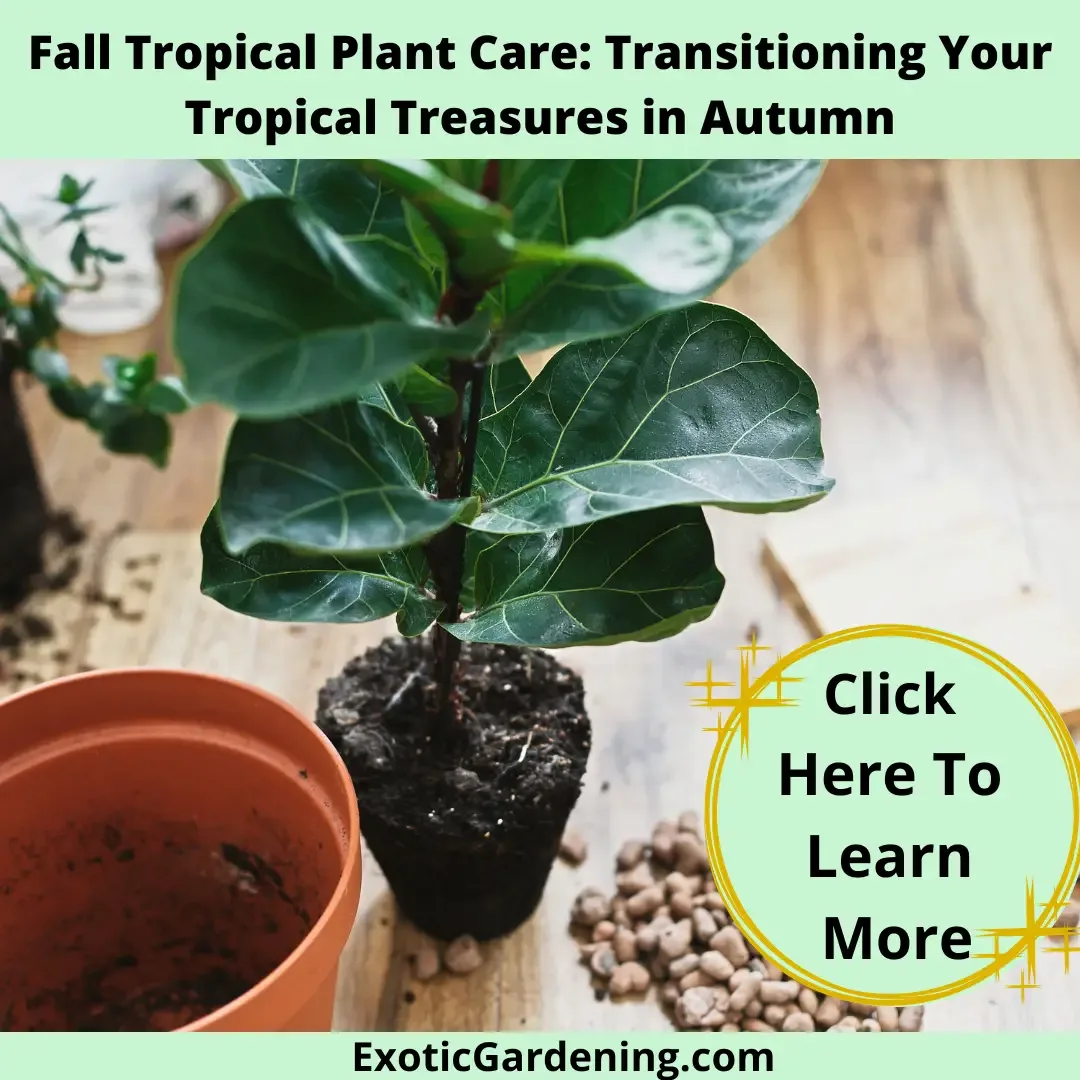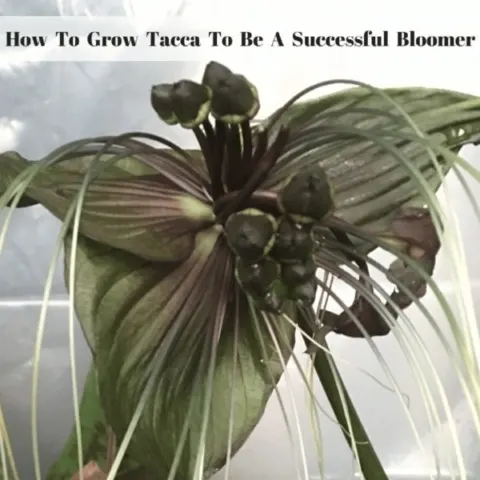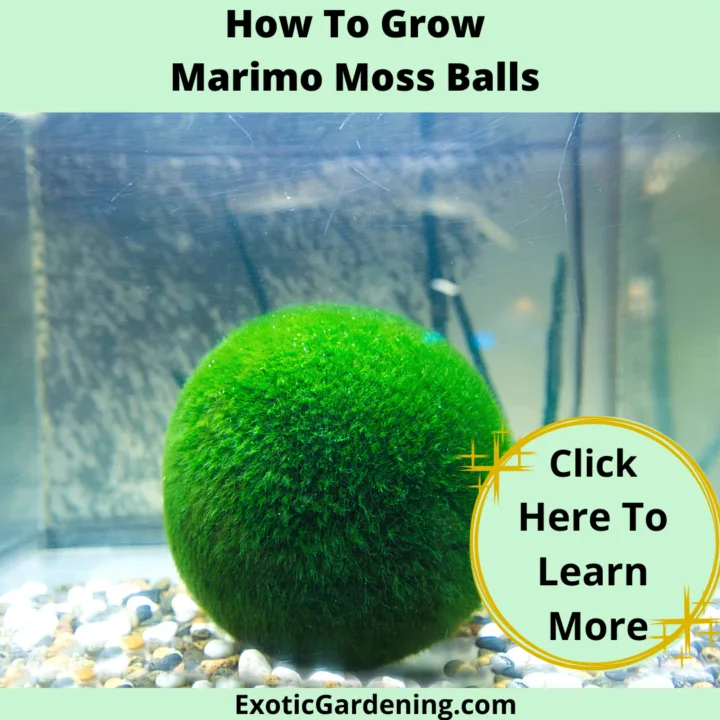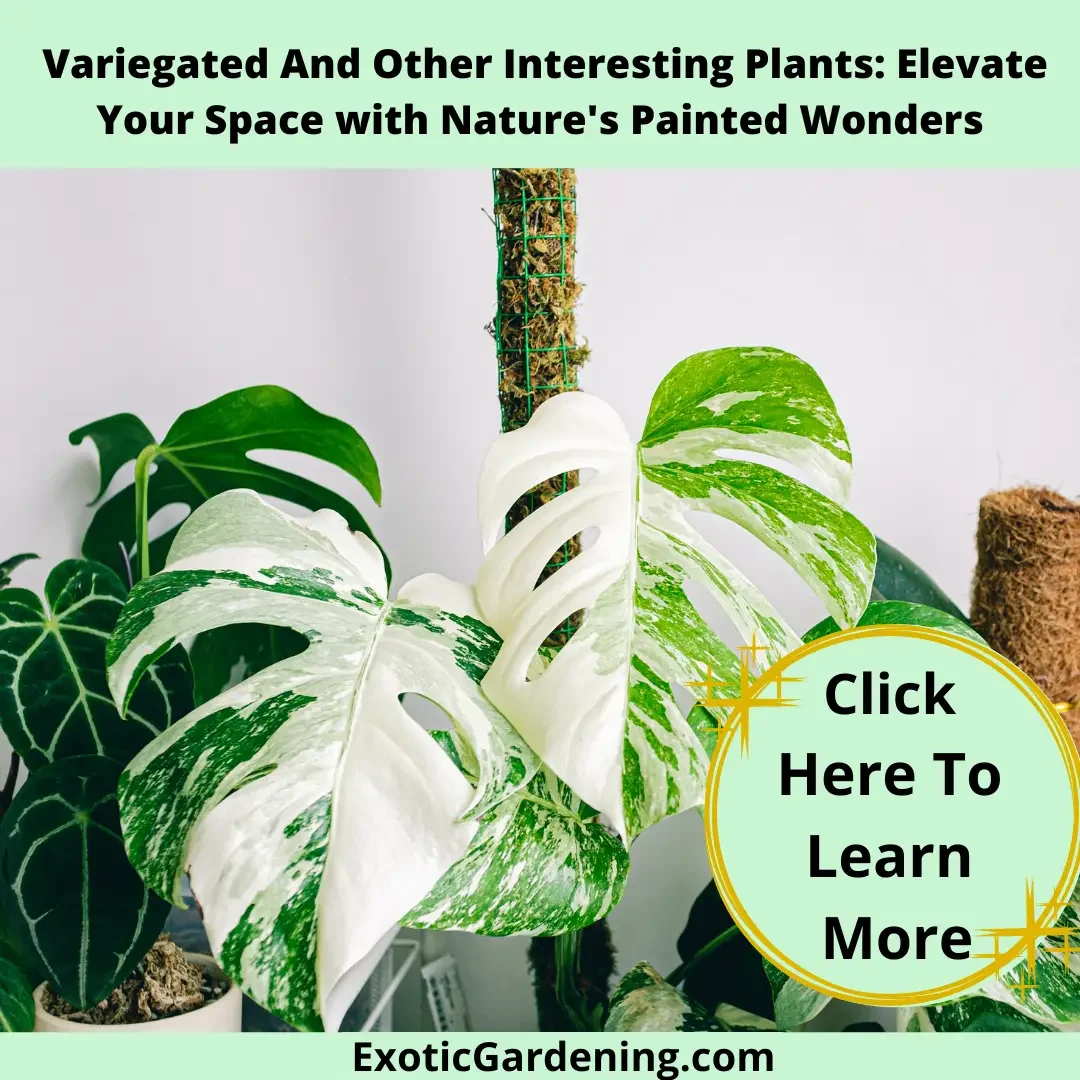If you're a fan of greenery and want to make the most of your south-facing window, you're in for a treat.
South facing window plants are a fantastic addition to your home, turning it into a vibrant and soothing oasis.
For these plants to thrive, they require specific conditions, with sunlight being a key factor.
South-facing windows are like nature's gift to houseplants, bathing them in a generous dose of luminous energy.
Now, delving into the world of botanical wonders might seem like a daunting task, especially if you're new to it.
But fear not, because, with a good grasp of light requirements and a diverse selection of suitable flora, you can create a thriving sunlit garden in no time.
As we journey through this green adventure, I'll not only share essential care practices but also introduce you to a variety of south facing window plants.
We'll explore both rare and common options to cater to all types of plant lovers.
So, let's equip ourselves with knowledge and embark on the path to cultivating an enchanting south-facing window garden teeming with life and beauty.
It's going to be a truly engaging and rewarding experience.
A Guide to Understanding Plant Light Requirements
Every avid gardener knows that plants are incredible beings, with each species having its unique caregiving manual.
Among the primary factors influencing plant growth and health is light---an indispensable source of life energy that drives the must-happen process of photosynthesis.
But like Goldilocks and her porridge, every plant species has a preference for 'just right' sunlight exposure.
Too much may scorch them, while too little can stifle growth.
So, how do we understand diverse plant's light requirements?
First, let's delve into the significance of sunlight in a plant's life.
Photosynthesis, the plant's food manufacturing process, relies heavily on sunlight.
Sunlight is the energy that powers the transformation of carbon dioxide and water into glucose, which fuels the plant's growth.
More than that, the chlorophyll within each green leaf requires sunlight to produce this magical transformation, hence making sunlight instrumental in sustainable plant life.
Now that we've established the critical role of light, it's essential to remember that not all plants have the same light requirements.
Plants are divided into four categories depending on their light needs: Full Sun, Part Sun, Part Shade, and Full Shade.
- Full Sun plants, like sunflowers and most vegetables, thrive with at least six hours of direct sunlight daily. They bask in the glory of the sun and transform its power into lush growth.
- Part Sun plants, like certain species of Roses and Hydrangeas, still love the sun but prefer a bit gentler exposure. They do best with four to six hours of sun, ideally in the cooler hours of morning and evening.
- Part Shade plants, including Hostas and Ferns, appreciate less sunlight. They can manage with three to six hours of morning sun, but need shade in the heat of the day, as their leaves may otherwise wilt or burn.
- Full Shade plants, such as Ivy and certain Orchids, have adapted to growing in low-light conditions. They get by on lower levels of indirect light or dappled sunlight that filters through tree branches.
Plants often physically show whether they are content with their light conditions.
For example, plants that lean or 'reach' towards a light source may be crying out for more.
Conversely, leaves that look bleached or scorched could be indicating too much exposure.
Understanding a plant's native environment also provides excellent clues about their light needs.
Plants native to dense tropical jungles, like the prized Monstera, typically enjoy indirect light, replicating the dappled sunlight that filters through a leafy jungle canopy.
In contrast, those from open, arid habitats like the succulent Aloe Vera love bathing in bright light.
By learning about the various plants' light requirements and observing their unique responses to light, gardeners can cause miracles.
With this understanding, each plant's sunlight sweet spot can be met, resulting in a thriving, lush, and fruitful garden.
Therefore, let's charge ahead and let the sunshine in!
Best Plant Choices for South-Facing Windows
The art of anchoring the perfect green companion for your south-facing window is more than just a hobby; it's a craft that brings your space to life.
With an understanding of a plant's requirement for sunlight, we can now dive into the specifics of choosing ideal plants that thrive in the ample sunlight bestowed by the south-facing windows.
For many plant lovers, a south-facing window is a treasure.
It is a spot in the house that gets abundant direct sunlight throughout the day.
Some plants truly relish this sun exposure and it is these sun-lovers that stand out as the ideal choices for your south-facing windows.
Leading the charge are succulents, known for their resilience and love for the sun.
The Jade plant, Aloe Vera, and Echeveria are some of the succulents that flourish in sunny spaces, thriving in the strong light of a south-facing window.
They're the perfect pick to add some greenery to your sunny windowsills.
Cacti are another excellent choice for your sunny nooks.
Their natural habitats are in places with strong, direct sunlight, making your south-facing window an ideal home.
From the small yet enchanting Bunny Ears Cactus to the tall Saguaro Cactus, you'll find a wide range of cacti suited for all types of aesthetics.
For a splash of color, flowering plants like Hibiscus and Geraniums can provide a vibrant hue and refreshing fragrance.
Remember, these plants require a significant amount of sunlight for blooming, hence a south-facing window is an absolute boon for them.
For fans of herbs, Rosemary, Thyme, and Basil prosper in sun-soaked spots, eagerly reaching for the rays.
Placing these herbs next to your south-facing kitchen window can provide both a readily available fresh supply for cooking and an aromatic atmosphere.
However, a south-facing window can be a bit too much for certain plants.
They encounter issues like leaf scorching and rapid drying due to the intense light and heat.
The Monstera Thai Constellation, with its stunning variegated leaves, will undoubtedly become a showstopper in your collection, but remember this is a jungle plant, so direct sunlight is not recommended.
If you're looking for a pop of pink, the Philodendron Pink Princess or Philodendron White Princess, with their unique and colorful foliage, are excellent choices to infuse some vibrancy into your sunlit oasis.
Hoyas, with their waxy, trailing vines, and delicate star-shaped flowers, bring an elegant charm to your space, but can become sun stressed if the sunlight is too strong.
Orchids, known for their exquisite blooms, can turn your south-facing window into a tropical paradise, but again, direct sun is too strong for them, so offer them filtered sunlight.
Be sure to monitor your plants regularly for signs of sun stress such as wilting or color loss.
In case the sun feels too strong, creating a sun filter using a sheer curtain can be beneficial.
Alternatively, placing the plants a bit away from the window, where they can still enjoy the light but at a safer intensity, can be implemented.
An essential part of the plant-selection process is understanding their native environment and matching it to your home conditions as closely as possible.
Research about your plant choices, learn about their needs, and then get to it.
In the end, it’s about creating an environment where your plant buddies can thrive.
With the right plant choices for your south-facing windows, you can transform your space into a vibrant, living gallery while indulging in the rewarding ritual of plant care.
So go on, let your green thumb guide you!
Shedding Light on Proper Care Routines for South-Facing Window Plants
Turning our focus towards the art of maintaining green spaces indoors, it’s vital to consider the unique benefits and challenges that come with south-facing window plants.
As most seasoned plant parents know, the power of the sun, especially in a south-facing window, can transform a previously drab space into a vibrant oasis of greenery.
How you care for your sun-loving plants goes a long way in determining their growth and overall health.
A critical first step is to realize that not all plants are suited to the brilliant intensity of a south-facing window.
It's essential to choose plants that can bask in the flood of sunlight, like beautiful succulents, sturdy cacti, various flowering plants, and certain herb plants.
Speaking of cacti, these desert natives are beacons of resilience, thriving in sun-drenched locations.
They store water in their tissues, enabling them to withstand harsh sunlight conditions.
However, even these hardy plants need a little monitoring.
You'll want to maintain a keen eye for any discoloration or shriveling, both signs that they might be getting too much of the sun's rays.
While cacti are a terrific choice for south-facing window gardens, let's not forget about flowering plants, which need ample sunlight to bloom.
Pelargoniums, also known as geraniums, are a prime example.
They flourish under bright conditions, adding gentle aromas and a burst of color to your indoor garden.
Understanding a plant's native environment is invaluable when determining its sunlight requirements.
Those originating from tropical or Mediterranean climates, such as rosemary, are known to thrive in full sun when indoors – enhancing both their growth and the heady scents that make them so beloved.
However, life with south-facing window plants isn't always just balmy days and blossoming flowers.
Intense sunlight can sometimes pose serious challenges for our green friends, like dehydration or sunburn.
It's essential to balance the love of the sun with an adequate hydration schedule for your plants.
Watering requirements may vary, but broadly speaking, playful spritzing or deep drenching around dawn or dusk can help to avoid evaporation during peak sunlight hours.
Some plant types, like Hoya might show signs of sun-stress.
These can range from dull, washed-out foliage to leaf curling.
Plants who exhibit these signs may need a curtain filter for the sun's intensity or perhaps a relocation to a less dazzling spot.
Wrapping it up, taking proper care of south-facing window plants can be a truly rewarding endeavor.
It requires knowledge about the sunlight requirements of different plants, a keen eye for any sunlight-induced issues, and a heart filled with passion for nurturing life.
Remember, a thriving indoor garden isn't just about introducing light-seeking plants to the south-facing windows.
It's about creating an environment where these plant pals can flourish, adding a dash of nature's charm and tranquility to your living spaces.
By understanding the unique needs of your sun-loving plants, you'll indeed create an indoor garden that serves as a sunny sanctuary for your evergreen friends.
Designing your South-Facing Window Garden
With the foundation laid on light requirements for various plants, we're set to take a deep dive into the exciting world of designing the perfect setup for that sun-drenched, south-facing window.
South-facing windows, with their generous sunlight offerings, can be turned into thriving botanical paradises.
And the key to unlocking this potential?
Careful plant selection, proper placement, and attentive maintenance.
When considering which plants to populate your south-facing sanctuary with, it's essential to focus on sun worshippers.
We all know succulents and cacti are the quintessential sun lovers and, with their myriad forms, textures, and colors, there's no end to the visual interest they can bring.
But don't forget about leafy beauties like Crotons or Yucca plants that also relish strong sunlight.
The Crotons' vibrant color spectrum is particularly striking when backlit by the sun.
Credit must also be given to flowering sun magnets such as Hibiscus or Bougainvillea, which will reward ample sunlight with stunning blooms, season after season.
To create dimensional and captivating arrangements, layer plants according to their heights.
Taller plants like a slender Yucca Tree, can be mixed with mid-height flowering plants, and low-lying succulents to complete the tier.
However, do not overlook the potential issues of hosting such a sun-loving community.
The intensity of direct sunlight through a window can be too harsh for some plants.
When leaves start turning yellow, get crispy, or start falling, it's likely a plant may be sunburnt.
One must be on the lookout for these signs and be quick in moving at-risk plants to a more shaded spot.
A sheer curtain can also be employed to mitigate such issues, as it diffuses the sunlight while letting lots of it through still.
Then comes the topic of hydration.
Watering requirements for plants in a south-facing window can be challenging to nail down.
Factors such as pot size, soil mixture, and specific plant needs all come into play.
Generally, deeply watering less frequently often works best for sun-loving plants, but always make sure the topsoil is dry before watering again.
In conclusion, designing a suitable and aesthetically pleasing setup for a south-facing window can be a rewarding endeavor, only heightened by watching the chosen plants thrive and flourish.
It's a conscious balance of right plant selection, attentive maintenance, and timely responses to signs of distress.
With these in mind, any south-facing window can be successfully transformed into a verdant sanctuary of sun-loving plants.
Embrace the sunlight and let the botanical adventure begin!
Cultivating Your South-Facing Window Paradise
As we journey through the array of suitable south facing window plants and grasp the essentials of their care, it becomes evident that nurturing sun-loving houseplants can be an extraordinary, rewarding experience.
The magic lies not only in their growth and flourishing but in the transformation they bring about in your space.
A well-curated and thoughtfully cared for south-facing window garden does more than enliven your home.
It creates a sanctuary of serene beauty, fostering well-being and tranquility.
With your guided understanding of light requirements, plant selection, care, and design, there's nothing to stop you from breathing life into your living space with a stunningly vibrant, south-facing window garden.
So, my fellow plant enthusiast, let's embark on this green adventure together.
Your journey to a thriving, sunlit oasis begins right here, right now.
Houseplant Care in Your South-Facing Window: Your FAQs Answered
In this FAQ section, we dive deeper into the world of South-Facing Window Plants.
It's your opportunity to find answers to common queries and gain insights into ensuring your sunlit indoor garden thrives.
Whether you're a beginner or a seasoned plant enthusiast, these FAQs provide valuable guidance for your journey.
Q: What are the key factors to consider when selecting houseplants for a south-facing window?
A: When choosing houseplants for a south-facing window, focus on plants that thrive in bright, direct sunlight. Succulents, cacti, and flowering plants like Hibiscus are excellent choices. Also, consider rare beauties like Monstera Thai Constellation and Philodendron Pink Princess for added diversity, but know that they need filtered sunlight, not direct sunlight.
Q: How often should I water houseplants in a south-facing window?
A: The frequency of watering depends on the type of plant and the specific conditions in your home. Generally, it's essential to allow the soil to dry slightly between waterings. Test the soil moisture with your finger, and adjust your watering schedule accordingly.
Q: Do south-facing windows provide enough humidity for houseplants?
A: South-facing windows can be drier due to the direct sunlight. To increase humidity, consider misting your plants, using a humidity tray, or grouping plants together. For humidity-loving plants like Hoyas or Orchids, these additional measures may be necessary.
Q: What's the best way to prevent sunburn on houseplants in a south-facing window?
A: Sunburn can be a concern. To prevent it, gradually acclimate your plants to direct sunlight. You can also use sheer curtains as a sun filter or move plants slightly away from the window to reduce the intensity of light.
Q: Are there specific fertilization needs for houseplants in a south-facing window?
A: Houseplants in south-facing windows benefit from regular fertilization during their growing season. Use a balanced, water-soluble fertilizer and follow the recommended dosage on the product label. Reduce fertilization during the dormant winter months.
Q: How can I prevent pests on my sun-loving houseplants?
A: To deter pests, inspect your plants regularly. Isolate any affected plants, and clean them with a gentle soap and water solution. Neem oil or insecticidal soap can also be used for pest control, following the manufacturer's instructions.
Q: Can I rotate my houseplants in a south-facing window for even growth?
A: Rotating your plants every few weeks is a great practice to ensure even growth. This prevents one side of the plant from receiving too much sunlight, promoting a balanced and healthy appearance.
Q: What's the ideal temperature range for houseplants in a south-facing window?
A: Houseplants generally thrive in temperatures between 65°F to 75°F (18°C to 24°C). Avoid placing them too close to the window during very cold or hot months, as extreme temperatures can stress the plants.
Q: Is it necessary to repot houseplants that outgrow their containers in a south-facing window?
A: Repotting is essential when a plant becomes root-bound or outgrows its container. Choose a slightly larger pot with good drainage, and refresh the soil to provide more room for growth.
Q: Can I use artificial lighting in conjunction with natural sunlight for my houseplants?
A: Yes, supplemental artificial lighting can be beneficial, especially during the winter months when daylight hours are shorter. LED or fluorescent grow lights can supplement the natural light to ensure your plants receive the required amount of light.
Q: Are there any specific considerations for rare houseplants in a south-facing window?
A: Rare houseplants often have specific care requirements. Research their unique needs, such as humidity, temperature, and watering, to ensure they thrive in your south-facing window.
Q: How can I prevent overwatering my houseplants in a sunlit window?
A: Overwatering is a common issue. Use well-draining soil and pots with drainage holes. Water your plants thoroughly but allow the excess water to drain out, preventing waterlogged soil.
Q: What's the best way to support tall or vining houseplants in a south-facing window?
A: Tall or vining plants may require support to prevent them from bending or toppling. Use stakes, trellises, or decorative supports to help them maintain an upright and attractive form.
Q: Can I grow herbs in a south-facing window, and what herbs are best suited for this location?
A: South-facing windows are ideal for growing herbs like Rosemary, Thyme, and Basil. These herbs love the abundant sunlight and are perfect for both culinary use and aesthetic appeal.
Q: How can I tell if my houseplants are getting the right amount of light in a south-facing window?
A: Watch your plants closely. If they're stretching or leaning toward the window, they may need more light. If you notice leaf burn or discoloration, they could be getting too much direct sun.
Q: Are there any specific tips for maintaining the variegated leaves of rare houseplants like Monstera Thai Constellation?
A: Variegated plants may need slightly less direct sunlight than their non-variegated counterparts. Be mindful of this and adjust their placement to ensure the variegation remains vibrant.
Q: Can I use self-watering pots for my houseplants in a south-facing window?
A: Self-watering pots can be convenient, but they're not suitable for all plants. Ensure that the specific plant you have is compatible with self-watering systems, as some may not tolerate consistently moist soil.
Q: What's the best way to ensure even growth in houseplants with varying light requirements in a south-facing window?
A: Grouping plants with similar light requirements can help ensure even growth. This way, you can tailor the light conditions for each cluster of plants to meet their specific needs.
Q: How do I troubleshoot common issues like yellowing leaves or drooping in my south-facing window plants?
A: Yellowing leaves can be a sign of overwatering, while drooping can result from underwatering. Adjust your watering schedule based on the specific needs of your plants and monitor changes.
Q: Is it possible to create a stunning, low-maintenance south-facing window garden?
A: Yes, you can design a low-maintenance garden by selecting houseplants that match your available time and care preferences. Choose plants that are known for their easy care to simplify your gardening routine.
Q: Can I incorporate a trellis or vertical gardening elements for vining plants in a south-facing window?
A: Absolutely, vertical gardening with trellises or wall-mounted planters can maximize space and create a visually appealing display for vining plants. Ensure that the trellis or support is securely installed to accommodate the growth of your plants.
Q: How can I encourage flowering in my south-facing window plants like Hibiscus and Geraniums?
A: Providing ample sunlight and following a regular fertilization schedule during the growing season can encourage flowering. Additionally, deadheading (removing spent flowers) can promote continued blooming.
Q: Are there specific tips for caring for sun-sensitive houseplants in a south-facing window?
A: Sun-sensitive plants may require additional shading during the hottest parts of the day. Use sheer curtains or place them a bit farther from the window to protect them from intense sunlight and heat.
Q: Can I use natural light variations throughout the day to create a more dynamic and diverse environment for my south-facing window plants?
A: Yes, natural light variations can mimic a plant's natural habitat and promote healthier growth. Consider rotating your plants to ensure they receive different angles of sunlight throughout the day.
Q: What's the best way to prevent soil compaction and improve aeration for houseplants in a south-facing window?
A: Soil compaction can be prevented by using a well-draining potting mix and aerating the soil regularly. Gently loosening the top layer of soil with a small fork or chopstick helps improve aeration and root health.
Q: Are there any decorative ideas to enhance the aesthetics of my south-facing window garden?
A: You can add decorative elements like colorful pots, plant stands, or hanging planters to elevate the visual appeal of your south-facing window garden. These accents can complement your plants and create an inviting, green oasis.
Q: How can I encourage trailing plants like Hoyas to flourish in a south-facing window?
A: Trailing plants benefit from a well-balanced watering routine and a supportive structure like a trellis or plant hanger. Regular pruning can also encourage lush growth and maintain a neat appearance.
Q: Can I use natural remedies for pest control on my south-facing window plants?
A: Natural remedies like neem oil, diluted soapy water, or even introducing beneficial insects can help control pests without the use of harsh chemicals. These eco-friendly solutions can keep your plants healthy and pest-free.
Q: What are the advantages of growing houseplants in a south-facing window compared to other orientations?
A: South-facing windows offer consistent, direct sunlight throughout the day, making them ideal for a wide variety of sun-loving plants. This orientation allows you to create a lush and vibrant indoor garden with a diverse range of plant choices.
Q: How do I determine the appropriate pot size for my houseplants in a south-facing window?
A: When selecting pots, choose a size that provides enough room for the plant's roots to grow while allowing excess water to drain out. A pot that is slightly larger than the plant's current size is usually a good choice.
Q: Can I use bottom watering as a method for keeping my south-facing window plants hydrated?
A: Bottom watering can be an effective method, especially for plants with deep roots. Simply place the pot in a shallow tray of water, allowing the soil to soak up moisture from the bottom. However, monitor the water level to avoid overwatering.
Q: How can I create a harmonious design aesthetic with a variety of houseplants in my south-facing window?
A: To create a harmonious design, consider the color, texture, and size of your plants. Group them in clusters with similar care needs to ensure a cohesive and visually pleasing arrangement in your south-facing window.
Q: What are the best practices for maintaining the health and longevity of houseplants in a south-facing window?
A: Regularly monitor your plants for signs of health issues, provide them with the proper care, and be attentive to their specific requirements. Adjust your care routine as needed to ensure they thrive and grace your south-facing window with their beauty.
Q: Can I incorporate decorative elements like fairy lights or plant-themed artwork to enhance the ambiance of my south-facing window garden?
A: Yes, adding decorative touches like fairy lights, artwork, or plant-themed decor can create a cozy and inviting atmosphere around your south-facing window garden, making it a charming focal point in your home.
Q: How can I make the most of my south-facing window as a showcase for my rare houseplant collection?
A: Highlight your rare houseplants in your south-facing window by using adjustable shelves, plant stands, or display cabinets. These features can help you arrange and showcase your unique and prized plants effectively.
Q: Are there any environmentally friendly practices I can adopt when caring for my houseplants in a south-facing window?
A: Eco-friendly practices include using sustainable, recyclable pots and choosing organic fertilizers. You can also conserve water by repurposing excess water for other houseplants or outdoor gardening.
Q: What's the significance of choosing the right potting mix for houseplants in a south-facing window?
A: The right potting mix is crucial, as it affects drainage and aeration. Select a well-draining mix that suits your plant's specific needs, whether it's succulent soil, cactus mix, or a standard potting mix.
Q: How can I create a peaceful, plant-filled sanctuary in my south-facing window, fostering well-being and tranquility?
A: To create a tranquil haven in your south-facing window, incorporate relaxing elements like comfortable seating, natural materials, and soothing colors. Combining these with your thriving houseplants will transform the space into a serene oasis.
Q: Can I incorporate a water feature or small fountain in my south-facing window garden?
A: A small water feature or fountain can enhance the ambiance of your sunlit garden, adding an element of relaxation and auditory pleasure. Ensure it's positioned to avoid splashing your plants and that the water is replenished regularly.
Q: How can I make my south-facing window garden a focal point of my home's design?
A: Design your south-facing window garden with unique containers, statement plants, and thoughtful placement to make it a captivating focal point. Coordinate the decor around the window to create a cohesive and appealing space.
Q: What are the creative ways to use reflective surfaces to maximize light for houseplants in a south-facing window?
A: Reflective surfaces like mirrors or light-colored walls can help distribute light more effectively. Position them strategically to bounce sunlight onto your plants, ensuring they receive ample and balanced illumination.
Q: Can I propagate my houseplants in a south-facing window?
A: Yes, south-facing windows are excellent for propagation due to the abundant light. You can successfully propagate many houseplants using methods such as stem cuttings, leaf cuttings, or air layering, and watch your plant family grow.
Q: Are there any specific tips for creating an aesthetically pleasing arrangement with a mix of tall and short houseplants in a south-facing window?
A: Arrange your plants from tallest to shortest to create a dynamic visual effect. Use decorative pots or plant stands to elevate shorter plants, ensuring all are visible and contribute to a harmonious display.
Q: How can I manage the potential challenges of temperature fluctuations in a south-facing window throughout the year?
A: Insulate your plants during extremely hot or cold weather with curtains or additional protection. Monitoring the temperature and adjusting your care routine accordingly will help your plants thrive in changing conditions.
Q: Can I introduce natural predators like ladybugs for pest control in my south-facing window garden?
A: Introducing natural predators like ladybugs can be an eco-friendly way to control pests. Just ensure that the predators you introduce won't harm your houseplants, and monitor their impact.
Q: What's the best way to incorporate aromatic herbs into a south-facing window garden, enhancing both the ambiance and utility of the space?
A: Herbs like Rosemary, Thyme, and Basil not only add fragrance but also offer utility in cooking. Arrange them in decorative pots or planters near the window for both visual and practical benefits.
Q: Can I create a themed garden in my south-facing window, such as a tropical paradise or a desert oasis?
A: Absolutely! Themed gardens are a creative way to personalize your sunlit window. Choose plants, decor, and accents that align with your theme, transforming your south-facing window into the desired paradise or oasis.
Q: How can I protect my south-facing window garden from curious pets or young children?
A: Use plant barriers, hanging planters, or shelves to keep plants out of reach. Alternatively, choose non-toxic houseplants in case of accidental consumption by pets or children.
Q: Are there any advantages to grouping plants with similar watering needs in a south-facing window?
A: Grouping plants with similar watering requirements simplifies maintenance and ensures that you can provide the appropriate care for each cluster. It's a practical way to optimize your sunlit garden.
Q: Can I use companion planting concepts to enhance the health and vitality of my south-facing window garden?
A: Companion planting can be applied in a south-facing window garden to improve pollination and pest control. Pairing compatible plant species can create a harmonious and beneficial ecosystem within your indoor garden.
Q: What's the role of air circulation in maintaining healthy houseplants in a south-facing window?
A: Adequate air circulation prevents issues like mold, mildew, and stagnant air pockets around your plants. Use fans or periodically open a nearby window to ensure fresh air circulates through your sunlit garden.
Q: How can I make my south-facing window garden an inviting space for relaxation and contemplation?
A: Include comfortable seating, cozy cushions, and soft lighting to create a welcoming nook in your south-facing window garden. It will become your favorite spot for relaxation and contemplation, surrounded by flourishing greenery.
Q: What are the best practices for revitalizing or repurposing a plant that has been struggling in a south-facing window?
A: If a plant is struggling, assess its needs. Repotting, adjusting its light conditions, or trimming damaged growth can often revive a struggling plant. In some cases, it may need specialized care, so research your plant's requirements.
Q: How can I incorporate elements of sustainable gardening into my south-facing window garden, reducing waste and environmental impact?
A: Use sustainable pots, recycle materials for decor, and reduce water waste by collecting and reusing excess water. Sustainable gardening practices can make your sunlit window garden eco-friendly and minimize its environmental footprint.
Q: Can I create an interactive or educational experience with my south-facing window garden, involving family members or visitors in its care and enjoyment?
A: Involving family and visitors in your window garden can be a wonderful educational experience. Teach them about the care of different plants, engage them in activities like propagation, and share the joy of nurturing your indoor oasis.
Q: What are some inspiring and creative ways to incorporate houseplants from a south-facing window into my home's overall interior design?
A: Use your south-facing window garden as a focal point, coordinating its colors and themes with your overall interior design. This integration will create a seamless connection between your sunlit oasis and the rest of your home's aesthetic.
Q: Can I create a showcase of unique, custom-made planters for my south-facing window garden to add a personal touch to the space?
A: Custom-made planters add a personal and artistic touch to your window garden. Create a collection of unique planters, or craft your own, to infuse your sunlit oasis with your creative spirit and style.
Q: How can I engage my south-facing window garden in the practice of sustainable living and organic principles?
A: You can use organic soil and natural fertilizers, recycle or repurpose containers, and conserve water by reusing it for your garden. Sustainable and organic principles can extend to your sunlit window garden, promoting eco-conscious living.
Q: Can I use my south-facing window garden to experiment with plant care techniques and expand my gardening skills?
A: Absolutely! Your south-facing window garden is an ideal space for experimenting with different care techniques, learning about plant varieties, and expanding your gardening expertise. The abundant sunlight provides an excellent environment for honing your green thumb.
Q: How can I take advantage of seasonal variations in sunlight to create a dynamic display in my south-facing window garden throughout the year?
A: Embrace seasonal variations by rotating plants to cater to their light needs. Use different seasonal decor and accents to create a dynamic and ever-changing display in your sunlit window.
Q: Can I introduce a meditation or yoga space in my south-facing window garden, making it a holistic oasis for both the mind and body?
A: Your sunlit garden is a perfect place to incorporate meditation or yoga. Design a serene and peaceful area within your window garden, integrating elements that foster relaxation and mindfulness for a holistic oasis.
Q: How can I make my south-facing window garden a source of inspiration and connection with the natural world for myself and others?
A: Share your passion for plants and the natural world by inviting friends and family to explore your sunlit garden. Inspire connections with nature and spark conversations about the beauty and wonder of the plant kingdom.
Q: What are some creative ways to personalize my south-facing window garden with DIY projects or handmade decor?
A: Personalize your window garden with DIY projects like handmade planters, plant markers, or decor crafted from natural materials. These personal touches will add character and uniqueness to your sunlit oasis.
Q: How can I incorporate a sense of wonder and discovery into my south-facing window garden, especially for young gardeners or children?
A: Create a sense of wonder by engaging young gardeners or children in your window garden. Encourage exploration, observation, and care of the plants to inspire a lifelong love for gardening and the natural world.
Q: Can I expand my south-facing window garden into a community or neighborhood project, promoting the benefits of houseplants and gardening to a wider audience?
A: Transform your window garden into a community project by sharing your knowledge and enthusiasm with neighbors or local groups. By spreading the joys and benefits of houseplants and gardening, you can inspire and connect with a wider audience.
Q: How can I use the peaceful and harmonious atmosphere of my south-facing window garden to foster creativity, relaxation, and well-being in my daily life?
A: Your sunlit window garden can become a hub for creativity and relaxation. Use the serene atmosphere to recharge your creativity, find moments of relaxation, and enhance your overall well-being as you connect with the lush, living world of your indoor oasis.
Q: What are the most essential aspects to consider when designing a sustainable, low-impact, and eco-friendly south-facing window garden?
A: Design your window garden with sustainability in mind by choosing eco-friendly materials, using natural and organic products, and conserving resources like water and energy. These practices align with low-impact and eco-conscious living.
Q: How can I use my south-facing window garden to embrace the spirit of green and organic living, both for myself and the planet?
A: Green and organic living can be embodied through your sunlit window garden. Choose natural and organic gardening methods, recycle and repurpose materials, and create a space that resonates with sustainability and eco-friendly principles.
Q: What's the best way to share the joys and knowledge of your south-facing window garden with your online audience or community, aligning with your DIY crafts and homesteading interests?
A: Share your window garden journey with your online audience by documenting your experiences, tips, and plant care insights. This aligns perfectly with your DIY crafts and homesteading interests, inspiring others to embark on their own green adventures.
Q: How can I create a sense of connection and community through your south-facing window garden, bringing together fellow plant enthusiasts and fostering discussions and shared experiences?
A: Engage with fellow plant enthusiasts by organizing plant swaps, garden tours, or workshops. These gatherings can create a sense of community and connection, allowing plant lovers to share experiences, insights, and a shared passion for the botanical world.
Q: What are some of the most memorable and heartwarming experiences you've had in your journey as a DIY crafter, homesteader, and plant enthusiast?
A: Embrace your unique journey as a DIY crafter, homesteader, and plant enthusiast by sharing your most memorable and heartwarming experiences. Your personal stories and insights can inspire and resonate with your online audience, fostering engagement and discussions.
Q: How can I keep my south-facing window garden thriving and evolving, ensuring that it remains a source of joy and inspiration for years to come?
A: To keep your window garden thriving and evolving, regularly refresh your plant collection, experiment with new species, and stay curious. Your evolving garden will continue to bring you joy and inspiration, keeping your green oasis ever-vibrant.
Q: What advice would you offer to newcomers and fellow plant enthusiasts embarking on their journey to create their own south-facing window garden?
A: Extend a warm welcome to newcomers and fellow plant enthusiasts by offering advice, sharing your experiences, and encouraging them to embrace the wonderful world of south-facing window gardening. Your guidance can be the catalyst for their successful and fulfilling journey.
Discover the Joy of Houseplants: Your Ultimate Resource Guide
Welcome to the ultimate guide for all things houseplants! Whether you’re a seasoned green thumb or just starting your indoor gardening journey, this curated list of articles has something for everyone. From detailed care instructions to creative decorating ideas, troubleshooting common issues, and learning about unique plant varieties, you’ll find everything you need to keep your indoor jungle thriving.
Explore topics like:
Essential care tips for popular houseplants.
Solutions to common problems like pests, watering mistakes, and lighting challenges.
Creative ways to display and style your plants.
Propagation guides to grow your collection.
Get inspired, troubleshoot challenges, and cultivate the lush, vibrant indoor space you’ve always dreamed of. Dive in and let your houseplants flourish with these helpful resources!
Transform Your Cozy Corner with these Perfect Plants for Small Spaces
Discover the beauty of compact gardening with our guide on choosing and caring for plants for small spaces.
The Complete Guide to Philodendron Pink Princess Care
Introducing the Philodendron Pink Princess
Allow me to introduce you to the crown jewel of my botanical collection – the enchanting Philodendron Pink Princess.
This recent addition is nothing short of a horticultural masterpiece, captivating the senses with its breathtaking display of colors.
Imagine deep, luxurious burgundy leaves, each adorned with bold splashes of vivacious pink.
The contrast is nothing short of a visual symphony, a natural work of art that commands attention.
As I gazed upon it for the first time, I couldn't help but marvel at the sheer beauty and grace that this plant exudes.
If you've never had the pleasure of setting your eyes on a Philodendron Pink Princess, consider yourself in for a treat beyond compare.
It's more than a plant; it's a showstopper, a conversation piece, and a living testament to the wonders of the natural world.
This captivating botanical gem promises to be a source of endless fascination and admiration in any space it graces.
Spider Plants: The Perfect Gateway Plant for Gardening Enthusiasts
Spider plants, the perfect gateway plant, add charm, purify air, and are ideal for beginners and seasoned gardeners alike.
Spider Plant Light Requirements: A Key to Growth
Explore Spider Plant light requirements for thriving indoor growth. Learn key tips for optimal lighting conditions and vibrant greenery.
How to Grow Spider Plants
Discover how to grow spider plants with expert tips on light, watering, soil, and more for thriving plants!
5 Creative Spider Plant Display Ideas for Your Home
Discover creative spider plant display ideas to elevate your home decor with unique, stunning, and easy-to-implement solutions.
5 Fun DIY Projects with Spider Plants
Explore creative DIY projects with Spider Plants, including terrariums, macramé hangers, and upcycled planters for vibrant decor.
10 Fascinating Facts About Spider Plants You Didn’t Know
Discover fascinating facts about spider plants, including their care, propagation, and unique qualities that make them standout houseplants.
Top 10 Common Spider Plant Problems and How to Fix Them
Discover solutions to common spider plant problems like brown tips, yellow leaves, and droopy growth to keep them thriving.
How to Propagate Spider Plants: A Step-by-Step Guide
Learn how to propagate spider plants with easy, step-by-step instructions to grow vibrant, healthy indoor plants effortlessly.
Rustic Interior Decorating Idea With Tropical Plants
Metal cages or even old bird cages filled with plants are a great way to add a rustic touch to your interior decor.
Plumeria: The Lei Flower Is A Fragrant, Easy To Grow Houseplant
Learn how to care for your Plumeria in ground and in containers. Because of the winter dormancy period it is ideal for summer containers.
Indoor Flowering Tropical Plants
There are a number of indoor flowering tropical plants that are easy to care for and bloom all winter long under the right conditions.
How To Grow Boswellia sacra
Boswellia sacra is the plant frankincense tears comes from. Learn how to grow the Boswellia sacra plant and what the various uses for it are.
6 Easy Tips On How To Care For Plants
Proper plant maintenance is essential if you want to learn how to grow healthy plants. Check out these six tips on how to care for plants.
Beneficial Indoor Gardening Plants You Need To Know
Learn about indoor gardening beneficial plants that are edible, help heal minor cuts or burns or those that help remove impurities from the indoor air.
How To Choose The Right House Plants For Indoor Gardening
Choosing the right plants for an indoor gardening environment is important for success. Many indoor gardening house plants are easy to care for.
How To Care For Holiday Plants
Have you ever wondered how to care for holiday plants such as the Poinsettia or the Christmas Cactus? If so, then check out this holiday plant care guide
Understanding and Treating Plant Blight: The In-depth Guide
Master treating plant blight with expert tips. Learn to protect your garden from this common threat. Essential insights inside.
Fall Tropical Plant Care: Transitioning Your Tropical Treasures in Autumn
Discover the secrets of successful Fall Tropical Plant Care. Learn how to transition your exotic plants for a thriving winter indoors.
Eucalyptus Growing Indoors: Tips and Troubleshooting Guide
Discover the art of eucalyptus growing indoors for year-round beauty and fragrant cut foliage in your flower arrangements.
When to use Fluval Stratum for Houseplants
Discover the perfect timing to use Fluval Stratum for houseplants and unlock vibrant growth in your indoor oasis. Learn more here.
How To Grow Bay Leaves Indoors
Discover the secrets of successful gardening with our guide on how to grow bay leaves indoors. Cultivate your own aromatic herb garden!
Easy Exotic Houseplants: Tropicals That Thrive Indoors in Containers
Tropical plants are the most beautiful, easy to grow indoor houseplants. Start growing exotic houseplants today that fruit and flower!
Brighten Up The Dull Days Of Winter With Blooms
Discover vibrant winter blooming houseplants that brighten your home with color and fragrance during the colder months.
Tips For Making A Moth Orchid Last From Costa Farms
Successful orchid care is pretty easy once you understand the seven basic steps the plant needs to thrive in your home environment.
Meet The Exotic Pitcher Plants - Sarraceniaceae, Nepenthaceae And Cephalotaceae
Learn about the exotic pitcher plants known as Sarraceniaceae, Nepenthaceae And Cephalotaceae including how to propagate them.
How To Grow Marimo Moss Balls
Learn how to grow Marimo Moss Balls and how to care for a moss ball to keep it happy. A Luffy ball is a very low maintenance plant.
Tropical Gardening: The Irresistible Allure & Addictive Power
Unveil the Addictive Allure of Tropical Gardening – From Starter Plants to Care Tips. Dive into #TropicalGardening!
Variegated And Other Interesting Plants: Elevate Your Space with Nature's Painted Wonders
Explore the world of variegated and unique plants, adding vibrant beauty and intrigue to your indoor oasis.
Tropical Plants For Medium To High Light
Check out these awesome tropcial plants for medium to high light that make wonderful, easy to care for houseplants.
How To Grow Tropical Plants
Growing tropical plants - also known as houseplants - indoors is fun and enjoyable plus many of them clean the indoor of pollutants.
It is easy to grow exotic looking plants that produce tropical fruit and colorful flowers in a pot in your living room or office.
Many of these plants are easy to start from seed and I share with you five plants that I recommend for indoor growing.
I also share with you why growing your own tropical fruit saves money.
In this video you will learn:
How to bring tropical plants indoors at the end of summer
How to grow tropical plants indoors
How to protect and overwinter tropical plants outdoors in cold climates
How to propagate tropical plants
How to water tropcial plants
How to grow topical plants in a greenhouse



